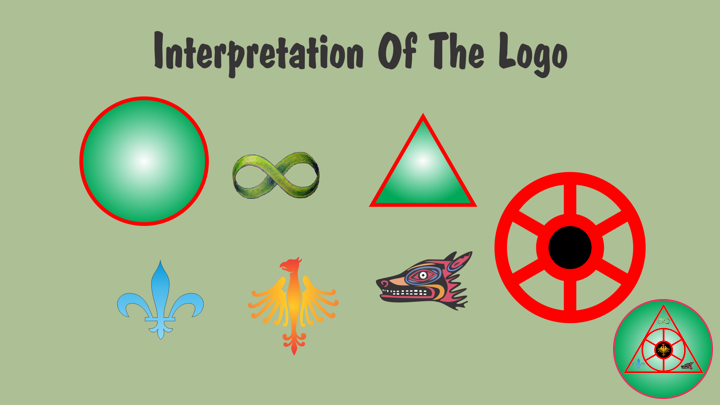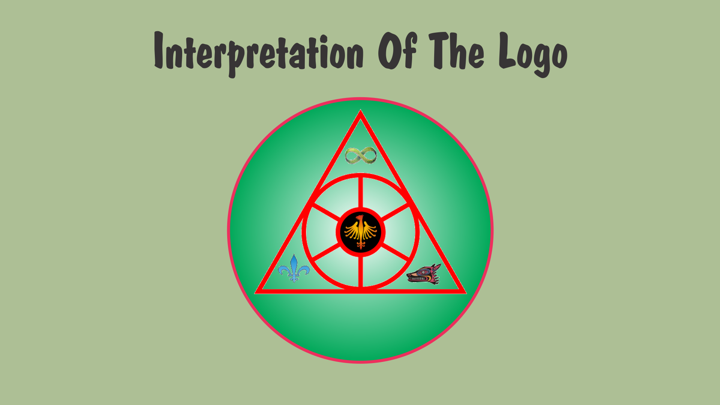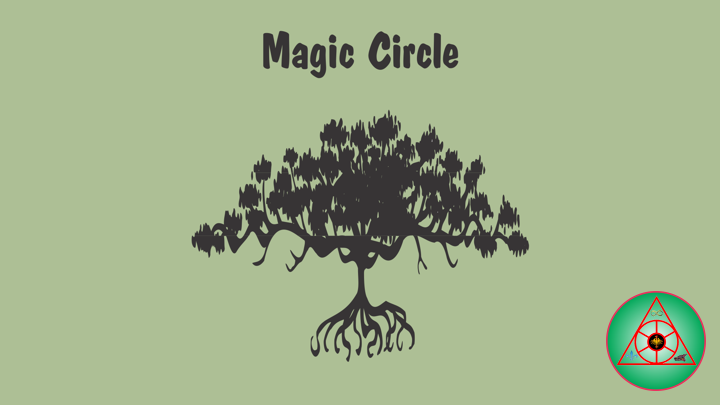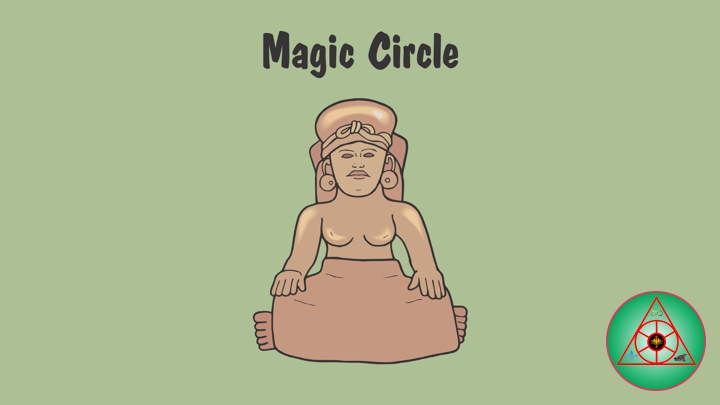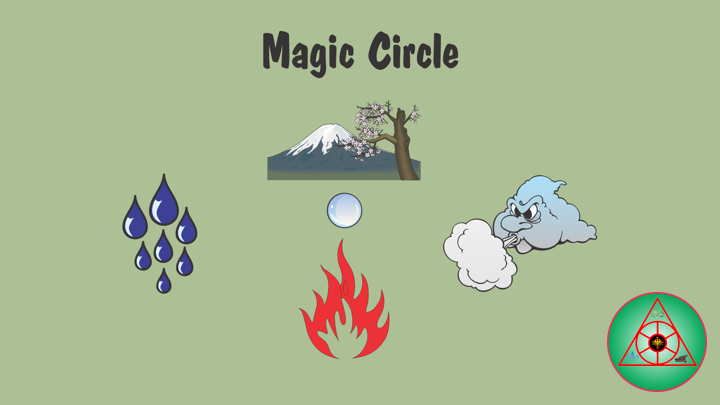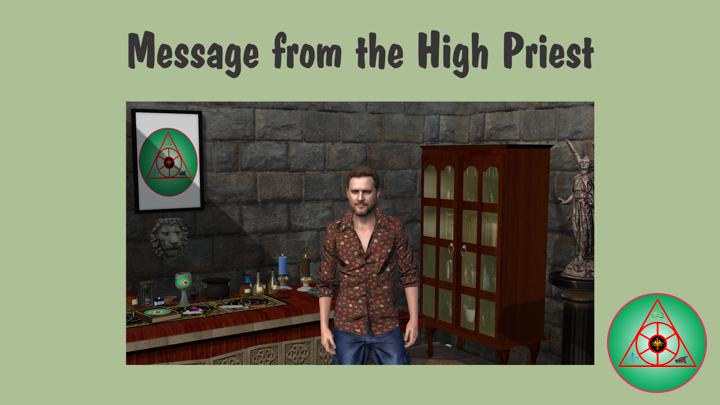Magical
Magical
——
#Magic #TLBWB #HighPriest #Witchcraft #Wizard #Witch #SacredHerbs #MagicalOils #Incense #Pentacle #MagicCircle #Spell #Grimoires
——
——
——
Interpretation Of The Logo
Circle
- To either the boundary of the figure.
- An interior and an exterior.
Triangle
- Associated with the number three.
- Pointing upwards, it symbolizes fire, male power.
Circle With A Dot In The Center
- Represents the sun.
- The dot in the center symbolizes the blending of male and female forces.
- The alchemical symbol for gold.
Wheel
- A universal symbol of or cosmic unity, the wheel of life, evolution.
- It symbolizes unity, movement, the sun, the zodiac, reincarnation, and earth’s cycles of renewal.
- This Sun Wheel became a magical amulet to the Celtic Gauls or Gaels in Europe.
Phoenix
- A universal symbol of the sun, mystical rebirth, resurrection and immortality.
- Die in its self-made flames periodically then rise again out of its own ashes.
- Linked to the worship of the fiery sun and sun gods such as Mexico’s Quetzalcoatl.
Infinity
- In ancient India and Tibet, it represented perfection, dualism, and unity between male and female.
- In the occult tarot it’s linked to magic and represents equilibrium or the balance of various forces.
- In modern times, it became a secular mathematical symbol for infinity in numbers, time or space (eternity).
Fleur de Lis
- Also called Lily of France, it was first an adaptation of the Gaulish lily representing the Virgin Juno.
- Among goddess worshippers, it apparently had several meanings, including the Triple Goddess the Wiccan moon goddess.
- Part of the emblem of where I was born.
Coyote
- Pagan Symbol – Trickster.
- Is keeper of magic, teacher and creator.
- He denotes both folly and wisdom and the balance of the two.
Follow Us
Languages Spoken and Written: French, English and Spanish.
eMail: lostbeardedwhite@sassquatch.org
Facebook: https://www.facebook.com/neosteam.labs.9/
YouTube: https://www.youtube.com/channel/UC5eRjrGn1CqkkGfZy0jxEdA
Twitter: https://twitter.com/labs_steam
Pinterest: https://www.pinterest.com/NeoSteamLabs/
Instagram: https://www.instagram.com/luc.paquin/
The Lost Bearded White Brother
——
#Magic #TLBWB #HighPriest #Witchcraft #Wizard #Witch #SacredHerbs #MagicalOils #Incense #Pentacle #MagicCircle #Spell #Grimoires
——
——
——
——
Grounding
This is very simple. I do it by a visualization of my feet as roots that push deep into the ground. Through these roots feel the energy of the earth and its strength, how it supports you and makes you strong. Your roots should go really go deep. After a while you can do this by just directing your thoughts and energy down into the earth but the visualization helps to get started. You can do this exercise any where whether you are in contact with the earth or not.
Centering
Find a place in your navel where you feel like it is your center of being. Practise centering into different places in the trunk of your body. First imagine that you have a field of energy around you. Another thing about practice, when I say that I am a Wizard or Witch I say that I am a practicing. This means that I am always learning and teaching my self. Being is a constant practice we are always looking for ways to bring peace and love into the enviroment. Our space is our sacred job given by the goddess do what you can to clean it up and make it better. If every person did this the world would be not only better but less hectic. I like the thought that cleaning is a ritual.
Magic Circle
First, ground and center. Mentaly ask the cleaning goddess to help you clean your space. Feel the energy around you, just be aware of how cluttered and messy your space is. Ground and center. What is Magic Circle? Why do we create it? How do we create it? What is it used for? Is it needed?
Magic Circle is simply an area that has been cleansed and blessed by you in the name of a deity. Magic Circle but as Wizard or Witch we do not worship in these areas and therefore must create our own. Magic Circle of space marked out by Wizard or Witch of some branches of ritual magic, which they generally believe will contain energy and form a sacred space, or will provide them a form of magical protection, or both.
To create sacred space you can be as simple or as formal as you wish. By simply saying, “By the powers of Earth, Air, Fire, Water, and Spirit I consecrate this space in the name of the God and the Goddess.” If you prefer something more formal walk around the area once for each individual element and a representation of it.
“By the power of earth I consecrate this space in the name of the God and the Goddess. (Drop salt as you go around and say the words)” Continue with each of the elements using a representation of each; Athame for Earth, water for Water, incense for Air, your candle for Fire.
The common technique for raising energy within the circle is by means of a cone of power. The circle is usually closed by the practitioner after they have finished by drawing in the energy with the Athame the circle including their hand. This is called closing the circle, releasing the circle. The term “opening” is often used, representing the idea the circle has been expanded and dissipated rather than closed in on itself.
It is within this area that you will draw your circle and perform your rituals. The area you choose to work in may be as small or as large as you wish. You may also want to take into consideration whether or not you will be working with others. You may also not want your space to be permanent. You may want to put it away between rituals; such as in my case. Unfortunately, the room is very small, as is the case with most, so my alter must also be the kitchen counter, dinning room table, and desk (Altar Cloth if the real one is covered). I use a trunk and when not in use my Magic Tools are stored within it.
Magic Tools
- Altar
- Altar Cloth
- Grimoires
- Athame
- Boline
- Chalice
- Wand
- Walking Stick
- Pentacle
- Cauldron
- Censer
- Bell
- Mirror Magic
- Jewellery
- Mortar and Pestle
- Magical Oils
- Sacred Herbs
- Magical Teas
- Wax Seal Stamp
- Sealing Wax Spoon
- Sealing Wax
- Parchments
- Magic Charm Bags
- Crystals
- Minerals
- Salt
- Water
- Wine
- Incense
- Candle
- Charcoal
- Etcetera…
Follow Us
Languages Spoken and Written: French, English and Spanish.
eMail: lostbeardedwhite@sassquatch.org
Facebook: https://www.facebook.com/neosteam.labs.9/
YouTube: https://www.youtube.com/channel/UC5eRjrGn1CqkkGfZy0jxEdA
Twitter: https://twitter.com/labs_steam
Pinterest: https://www.pinterest.com/NeoSteamLabs/
Instagram: https://www.instagram.com/luc.paquin/
The Lost Bearded White Brother
——
#Magic #TLBWB #HighPriest #Witchcraft #Wizard #Witch #SacredHerbs #MagicalOils #Incense #Pentacle #MagicCircle #Spell #Grimoires
——
——
Message from the High Priest
I am The Lost Bearded White Brother and was born a long time ago in a cold faraway land. Though I was born in a Catholic family and was baptized such, at home we never really had a spiritual life. I even had an uncle who was a Catholic priest who passed away when I was still a child, and the only thing I really remember from him was his love of the good things in life like good wine and good food. It must have impressed me a lot, because that too has been a lifelong quest, but I digress…
I started reading early, even before starting school. A few years later I was reading at least 6 books a week, and since that tender age I have been a voracious reader. Since I was very young I have always been interested in all things occult. The lack of any spiritual life at home, and my parent’s lack of response to my many questions launched me into a lifelong quest to learn about the mysteries of life. My mother had some interests in the subject and I borrowed some of her numerous books on the subject, as I inherited my thirst for reading from her, and I started to search all of the resources that were available to me at the time. I read about the various organized religions, and became disenchanted with all of them. More and more I became interested in the core philosophies of most religions and how they can be applied to the way we act and live, and to magic that can be used to better mankind.
Though I still consider myself a Catholic by indoctrination, for year I have been practicing my own form of religion or better worded, my own beliefs based on all of those philosophies and religions I studied and on magic. It involves at its core a great respect for others and for nature, and the prime goal to live my life to its fullest and to better myself and mankind daily.
Another interest passed on to my by my mother was that of archeology. She always says that if she could redo her life, she would study this subject. When I was growing up there was a lot of interest in mysticism and in the ancient civilizations, especially the ones from Latin America. I remember reading about the great archeological sites of those faraway warm climes, and dreaming about visiting there a day. As I always say “If there is a wish, there is a way”; I ended up moving to Mexico over 25 years ago after meeting a wonderful Mexican woman and marrying her. I always believed in the duality of the universe, for every Ying there is a Yang, for every Man there is a Woman, and for every cold place there is a warm one.
I brought to this warm country my kind of magic that is rooted in the cold climes of Northern Europe, and have been avidly studying the local brand of magic that has its roots in indigenous spiritualism, in Spanish magic, and various other imported influences, especially the heavy one of the Catholic Church. I have taken from all of those influences the aspects that work with my beliefs and have been using this potent blend of magic to better myself and those next to me. I have also read a lot of indigenous legends pervasive in all of the old southern civilizations about the long lost learned foreigner that will return in times of turmoil to bring spiritual help to the lands of the south.
These current times are nothing but tumultuous and I assume the mantle of High Priest to those who wish to follow me. I only promote goodness and harmony, and thus will only offer help to those seeking such. I plan to offer my magical powers to help those in need. To those who wish to do harm to others, to force others to do things against their will, or to gain things that are not theirs to get, please look somewhere else because I will never do that kind of work.
To those in search of some spiritual direction, if you would please have a look at what my beliefs are. It is not a religion, and I do not want to organize it as such, as with every organized religion comes dogma, and with dogma comes prejudice, and with prejudice comes lack of respect, and so on… Those basic principles are my beliefs, and if all passing through here can live a little more along those lines daily, the world would become a much better place to live in. I hope from the deepest part of my soul that such changes will happen and that the world will be better for it, even if only more one person follow parts of those simple beliefs.
Follow Us
Languages Spoken and Written: French, English and Spanish.
eMail: lostbeardedwhite@sassquatch.org
Facebook: https://www.facebook.com/neosteam.labs.9/
YouTube: https://www.youtube.com/channel/UC5eRjrGn1CqkkGfZy0jxEdA
Twitter: https://twitter.com/labs_steam
Pinterest: https://www.pinterest.com/NeoSteamLabs/
Instagram: https://www.instagram.com/luc.paquin/
The Lost Bearded White Brother
Message from the High Priest
I am the Lost Bearded White Brother and was born a long time ago in a cold faraway land. Though I was born in a Catholic family and was baptized such, at home we never really had a spiritual life. I even had an uncle who was a Catholic priest who passed away when I was still a child, and the only thing I really remember from him was his love of the good things in life like good wine and good food. It must have impressed me a lot, because that too has been a lifelong quest, but I digress…
I started reading early, even before starting school. A few years later I was reading at least 6 books a week, and since that tender age I have been a voracious reader. Since I was very young I have always been interested in all things occult. The lack of any spiritual life at home, and my parent’s lack of response to my many questions launched me into a lifelong quest to learn about the mysteries of life. My mother had some interests in the subject and I borrowed some of her numerous books on the subject, as I inherited my thirst for reading from her, and I started to search all of the resources that were available to me at the time. I read about the various organized religions, and became disenchanted with all of them. More and more I became interested in the core philosophies of most religions and how they can be applied to the way we act and live, and to magic that can be used to better mankind.
Though I still consider myself a Catholic by indoctrination, for year I have been practicing my own form of religion or better worded, my own beliefs based on all of those philosophies and religions I studied and on magic. It involves at its core a great respect for others and for nature, and the prime goal to live my life to its fullest and to better myself and mankind daily.
Another interest passed on to my by my mother was that of archeology. She always says that if she could redo her life, she would study this subject. When I was growing up there was a lot of interest in mysticism and in the ancient civilizations, especially the ones from Latin America. I remember reading about the great archeological sites of those faraway warm climes, and dreaming about visiting there a day. As I always say “If there is a wish, there is a way”; I ended up moving to Mexico over 20 years ago after meeting a wonderful Mexican woman and marrying her. I always believed in the duality of the universe, for every Ying there is a Yang, for every Man there is a Woman, and for every cold place there is a warm one.
I brought to this warm country my kind of magic that is rooted in the cold climes of Northern Europe, and have been avidly studying the local brand of magic that has its roots in indigenous spiritualism, in Spanish magic, and various other imported influences, especially the heavy one of the Catholic Church. I have taken from all of those influences the aspects that work with my beliefs and have been using this potent blend of magic to better myself and those next to me. I have also read a lot of indigenous legends pervasive in all of the old southern civilizations about the long lost learned foreigner that will return in times of turmoil to bring spiritual help to the lands of the south.
These current times are nothing but tumultuous and I assume the mantle of High Priest to those who wish to follow me. I only promote goodness and harmony, and thus will only offer help to those seeking such. I plan to offer my magical powers to help those in need. To those who wish to do harm to others, to force others to do things against their will, or to gain things that are not theirs to get, please look somewhere else because I will never do that kind of work.
To those in search of some spiritual direction, if you would please have a look at what my beliefs are. It is not a religion, and I do not want to organize it as such, as with every organized religion comes dogma, and with dogma comes prejudice, and with prejudice comes lack of respect, and so on… Those basic principles are my beliefs, and if all passing through here can live a little more along those lines daily, the world would become a much better place to live in. I hope from the deepest part of my soul that such changes will happen and that the world will be better for it, even if only more one person follow parts of those simple beliefs.
The Lost Bearded White Brother
Samhain is considered by Wiccans to be one of the four Greater Sabbats. Samhain is considered by some as a time to celebrate the lives of those who have passed on, and it often involves paying respect to ancestors, family members, elders of the faith, friends, pets, and other loved ones who have died. In some rituals the spirits of the departed are invited to attend the festivities. It is seen as a festival of darkness, which is balanced at the opposite point of the wheel by the festival of Beltane, which is celebrated as a festival of light and fertility.
Many Pagans believe that at Samhain the veil between this world and the afterlife is at its thinnest point of the whole year, making it easier to communicate with those who have left this world.
Wheel of the Year
Samhain is a Gaelic festival marking the end of the harvest season and the beginning of winter or the “darker half” of the year. Traditionally, Samhain is celebrated from sunset on 31 October to sunset on 1 November, which is about halfway between the autumn equinox and the winter solstice. It is one of the four Gaelic seasonal festivals, along with Imbolc, Beltane and Lughnasadh. Historically, it was widely observed throughout Ireland, Scotland and the Isle of Man. Similar festivals are held at the same time of year in other Celtic lands; for example the Brythonic Calan Gaeaf (in Wales), Kalan Gwav (in Cornwall), and Kalan Goañv (in Brittany).
Samhain is believed to have pagan origins and there is evidence it has been an important date since ancient times. The Mound of the Hostages, a Neolithic passage tomb at the Hill of Tara, is aligned with the Samhain sunrise. It is mentioned in some of the earliest Irish literature and many important events in Irish mythology happen or begin on Samhain. It was the time when cattle were brought back down from the summer pastures and when livestock were slaughtered for the winter. As at Beltane, special bonfires were lit. These were deemed to have protective and cleansing powers and there were rituals involving them. Like Beltane, Samhain was seen as a liminal time, when the boundary between this world and the Otherworld could more easily be crossed. This meant the Aos Sí, the ‘spirits’ or ‘fairies’, could more easily come into our world. Most scholars see the Aos Sí as remnants of the pagan gods and nature spirits. At Samhain, it was believed that the Aos Sí needed to be propitiated to ensure that the people and their livestock survived the winter. Offerings of food and drink were left outside for them. The souls of the dead were also thought to revisit their homes seeking hospitality. Feasts were had, at which the souls of dead kin were beckoned to attend and a place set at the table for them. Mumming and guising were part of the festival, and involved people going door-to-door in costume (or in disguise), often reciting verses in exchange for food. The costumes may have been a way of imitating, and disguising oneself from, the Aos Sí. Divination rituals and games were also a big part of the festival and often involved nuts and apples. In the late 19th century, Sir John Rhys and Sir James Frazer suggested that it was the “Celtic New Year”, and this view has been repeated by some other scholars.
In the 9th century AD, Western Christianity shifted the date of All Saints’ Day to 1 November, while 2 November later became All Souls’ Day. Over time, Samhain and All Saints’/All Souls’ merged to create the modern Halloween. Historians have used the name ‘Samhain’ to refer to Gaelic ‘Halloween’ customs up until the 19th century.
Etymology
In Modern Irish the name is Samhain, in Scottish Gaelic Samhainn/Samhuinn, and in Manx Gaelic Sauin. These are also the names of November in each language, shortened from Mí na Samhna (Irish), Mì na Samhna (Scottish Gaelic) and Mee Houney (Manx). The night of 31 October (Halloween) is Oíche Shamhna (Irish), Oidhche Shamhna (Scottish Gaelic) and Oie Houney (Manx), all meaning “Samhain night”. 1 November, or the whole festival, may be called Lá Samhna (Irish), Là Samhna (Scottish Gaelic) and Laa Houney (Manx), all meaning “Samhain day”.
These names all come from the Old Irish samain, samuin or samfuin all referring to 1 November (latha na samna: ‘samhain day’), and the festival and royal assembly held on that date in medieval Ireland (oenaig na samna: ‘samhain assembly’). Its meaning is glossed as ‘summer’s end’, and the frequent spelling with f suggests analysis by popular etymology as sam (‘summer’) and fuin (‘end’). The Old Irish sam is from Proto-Indo-European (PIE) *semo-; cognates include Welsh haf, Breton hañv, English summer and Old Norse sumar, all meaning ‘summer’, and the Sanskrit sáma (‘season’).
In 1907, Whitley Stokes suggested an etymology from Proto-Celtic *samani (‘assembly’), cognate to Sanskrit sámana, and Gothic samana. J. Vendryes concludes that samain is unrelated to *semo- (‘summer’), remarking that the Celtic ‘end of summer’ was in July, not November, as evidenced by Welsh gorffennaf (‘July’). We would therefore be dealing with an Insular Celtic word for ‘assembly’, *samani or *samoni, and a word for ‘summer’, saminos (from *samo-: ‘summer’) alongside samrad, *samo-roto-.
Neopaganism
Samhain and Samhain-based festivals are held by some Neopagans. As there are many kinds of Neopaganism, their Samhain celebrations can be very different despite the shared name. Some try to emulate the historic festival as much as possible. Other Neopagans base their celebrations on sundry unrelated sources, Gaelic culture being only one of the sources. Folklorist Jenny Butler describes how Irish pagans pick some elements of historic Samhain celebrations and meld them with references to the Celtic past, making a new festival of Samhain that is inimitably part of neo-pagan culture.
Wicca
Wiccans celebrate a variation of Samhain as one of the yearly Sabbats of the Wheel of the Year. It is deemed by most Wiccans to be the most important of the four “greater Sabbats”. Samhain is seen by some Wiccans as a time to celebrate the lives of those who have died, and it often involves paying respect to ancestors, family members, elders of the faith, friends, pets and other loved ones who have died. In some rituals the spirits of the dead are invited to attend the festivities. It is seen as a festival of darkness, which is balanced at the opposite point of the wheel by the spring festival of Beltane, which Wiccans celebrate as a festival of light and fertility.
Wiccans believe that at Samhain the veil between this world and the afterlife is at its thinnest point of the whole year, making it easier to communicate with those who have left this world.
The Lost Bearded White Brother
Russia
Witchcraft Trials
Although these two methods of torture were used in the west and the east, Russia implemented a system of fines payable for the crime of witchcraft during the seventeenth century. Thus, even though torture methods in Muscovy were on a similar level of harshness as Western European methods used, a more civil method was present. In the introduction of a collection of trial records pieced together by Russian scholar Nikolai Novombergsk, he argues that Muscovite authorities used the same degree of cruelty and harshness as Western European Catholic and Protestant countries in persecuting witches. By the mid-sixteenth century the manifestations of paganism, including witchcraft, and the black arts – astrology, fortune telling, and divination – became a serious concern to the Muscovite church and state.
Tsar Ivan IV (reigned 1547-1584) took this matter to the ecclesiastical court and was immediately advised that individuals practicing these forms of witchcraft should be excommunicated and given the death penalty. Ivan IV, as a true believer in witchcraft, was deeply convinced that sorcery accounted for the death of his wife, Anastasiia in 1560, which completely devastated and depressed him, leaving him heartbroken. Stemming from this belief, Ivan IV became majorly concerned with the threat of witchcraft harming his family, and feared he was in danger. So, during the Oprechnina (1565-1572), Ivan IV succeeded in accusing and charging a good number of boyars with witchcraft whom he did not wish to remain as nobles. Rulers after Ivan IV, specifically during the Time of Troubles (1598-1613), increased the fear of witchcraft among themselves and entire royal families, which then led to further preoccupation with the fear of prominent Muscovite witchcraft circles.
After the Time of Troubles, seventeenth-century Muscovite rulers held frequent investigations of witchcraft within their households, laying the ground, along with previous tsarist reforms, for widespread witchcraft trials throughout the Muscovite state. Between 1622 and 1700 ninety-one people were brought to trial in Muscovite courts for witchcraft. Although Russia did partake in the witch craze that swept across Western Europe, the Muscovite state did not persecute nearly as many people for witchcraft, let alone execute a number of individuals anywhere close to the number executed in the west during the witch hysteria.
The Lost Bearded White Brother
Russia
Witchcraft Trials
Witchcraft trials occurred frequently in seventeenth-century Russia, although the “great witch-hunt” is believed to be a predominately Western European phenomenon. However, as the witchcraft-trial craze swept across West European countries during this time, Orthodox Christian Eastern Europe indeed partook in this so-called “witch hysteria.” This involved the persecution of both males and females who were believed to be practicing paganism, herbology, the black art, or a form of sorcery within and/or outside their community. Very early on witchcraft legally fell under the jurisdiction of the ecclesiastical body, the church, in Kievan Rus’ and Muscovite Russia. Sources of ecclesiastical witchcraft jurisdiction date back as early as the second half of the eleventh century, one being Vladimir the Great’s first edition of his State Statute or Ustav, another being multiple references in the Primary Chronicle beginning in 1024.
The sentence for an individual found guilty of witchcraft or sorcery during this time, and in previous centuries, typically included either burning at the stake or being tested with the “ordeal of cold water” or judicium aquae frigidae. The cold-water test was primarily a Western European phenomenon, but was used as a method of truth in Russia prior to, and post, seventeenth-century witchcraft trials in Muscovy. Accused persons who drowned were considered innocent, and ecclesiastical authorities would proclaim them “brought back,” but those who floated were considered guilty of practicing witchcraft, and burned at the stake or executed in an unholy fashion. The thirteenth-century bishop of Vladimir, Serapion Vladimirskii, preached sermons throughout the Muscovite countryside, and in one particular sermon revealed that burning was the usual punishment for witchcraft, but more often the cold water test was used as a precursor to execution.
The Lost Bearded White Brother
Russia
Societal View of Witchcraft
The dominant societal concern those practicing witchcraft was not whether paganism was effective, but whether it could cause harm. Peasants in Russian and Ukrainian societies often shunned witchcraft, unless they needed help against supernatural forces. Impotence, stomach pains, barrenness, hernias, abscesses, epileptic seizures, and convulsions were all attributed to evil (or witchcraft). This is reflected in linguistics; there are numerous words for a variety of practitioners of paganism-based healers. Russian peasants referred to a witch as a chernoknizhnik (a person who plied his trade with the aid of a black book), sheptun/sheptun’ia (a “whisperer” male or female), lekar/lekarka or znakhar/znakharka (a male or female healer), or zagovornik (an incanter).
Ironically enough, there was universal reliance on folk healers – but clients often turned them in if something went wrong. According to Russian historian Valerie A. Kivelson, witchcraft accusations were normally thrown at lower-class peasants, townspeople and Cossacks. People turned to witchcraft as a means to support themselves. The ratio of male to female accusations was 75% to 25%. Males were targeted more, because witchcraft was associated with societal deviation. Because single people with no settled home could not be taxed, males typically had more power than women in their dissent.
The Lost Bearded White Brother
Russia
The Russian word for witch, ved’ma literally means “one who knows”, from Old Slavic “to know”.
Spells
Pagan practices formed a part of Russian and Eastern Slavic culture; the Russian people were deeply superstitious. The witchcraft practiced consisted mostly of earth magic and herbology; it was not so significant which herbs were used in practices, but how these herbs were gathered. Ritual centered on harvest of the crops and the location of the sun was very important. One source, pagan author Judika Illes, tells that herbs picked on Midsummer’s Eve were believed to be most powerful, especially if gathered on Bald Mountain near Kiev during the witches’ annual revels celebration. Botanicals should be gathered, “During the seventeenth minute of the fourteenth hour, under a dark moon, in the thirteenth field, wearing a red dress, pick the twelfth flower on the right.”
Spells also served for midwifery, shape-shifting, keeping lovers faithful, and bridal customs. Spells dealing with midwifery and childbirth focused on the spiritual wellbeing of the baby. Shape-shifting spells involved invocation of the wolf as a spirit animal. To keep men faithful, lovers would cut a ribbon the length of his erect penis and soak it in his seminal emissions after sex while he was sleeping, then tie seven knots in it; keeping this talisman of knot magic ensured loyalty. Part of an ancient pagan marriage tradition involved the bride taking a ritual bath at a bathhouse before the ceremony. Her sweat would be wiped from her body using raw fish, and the fish would be cooked and fed to the groom.
Demonism, or black magic, was not prevalent. Persecution for witchcraft, mostly involved the practice of simple earth magic, founded on herbology, by solitary practitioners with a Christian influence. In one case investigators found a locked box containing something bundled in a kerchief and three paper packets, wrapped and tied, containing crushed grasses. Most rituals of witchcraft were very simple-one spell of divination consists of sitting alone outside meditating, asking the earth to show one’s fate.
While these customs were unique to Russian culture, they were not exclusive to this region. Russian pagan practices were often akin to paganism in other parts of the world. The Chinese concept of chi, a form of energy that often manipulated in witchcraft, is known as bioplasma in Russian practices. The western concept of an “evil eye” or a “hex” was translated to Russia as a “spoiler”. A spoiler was rooted in envy, jealousy and malice. Spoilers could be made by gathering bone from a cemetery, a knot of the target’s hair, burned wooden splinters and several herb Paris berries (which are very poisonous). Placing these items in sachet in the victim’s pillow completes a spoiler. The Sumerians, Babylonians, Assyrians, and the ancient Egyptians recognized the evil eye from as early as 3,000 BCE; in Russian practices it is seen as a sixteenth-century concept.
The Lost Bearded White Brother
Oceania
Cook Islands
In pre-Christian times, witchcraft was a common practice in the Cook Islands. The native name for a sorcerer was tangata purepure (a man who prays). The prayers offered by the ta’unga (priests) to the gods worshiped on national or tribal marae (temples) were termed karakia; those on minor occasions to the lesser gods were named pure. All these prayers were metrical, and were handed down from generation to generation with the utmost care. There were prayers for every such phase in life; for success in battle; for a change in wind (to overwhelm an adversary at sea, or that an intended voyage be propitious); that his crops may grow; to curse a thief; or wish ill-luck and death to his foes. Few men of middle age were without a number of these prayers or charms. The succession of a sorcerer was from father to son, or from uncle to nephew. So too of sorceresses: it would be from mother to daughter, or from aunt to niece. Sorcerers and sorceresses were often slain by relatives of their supposed victims.
Papua New Guinea
A local newspaper informed that more than 50 people were killed in two Highlands provinces of Papua New Guinea in 2008 for allegedly practicing witchcraft.
The Lost Bearded White Brother
